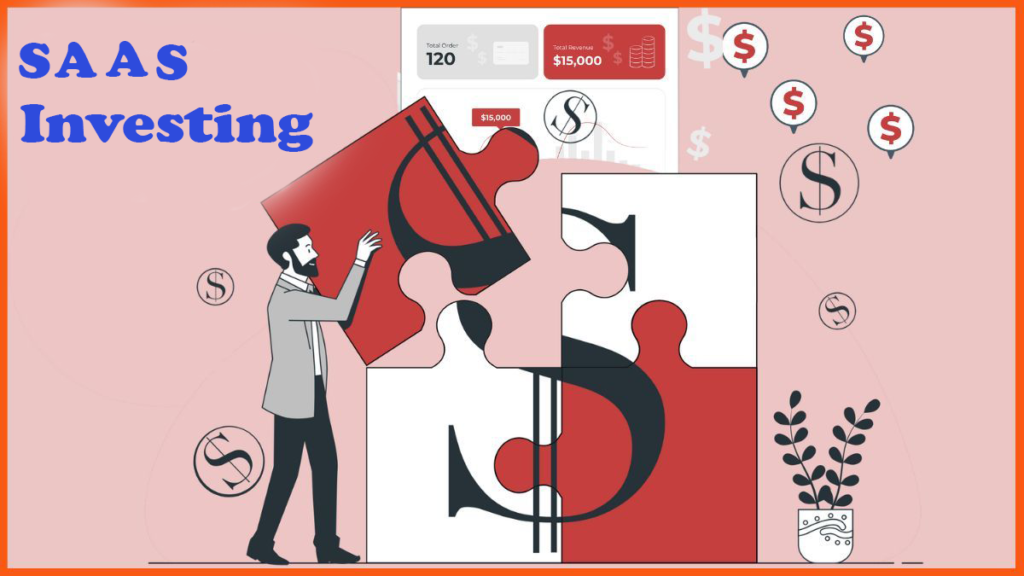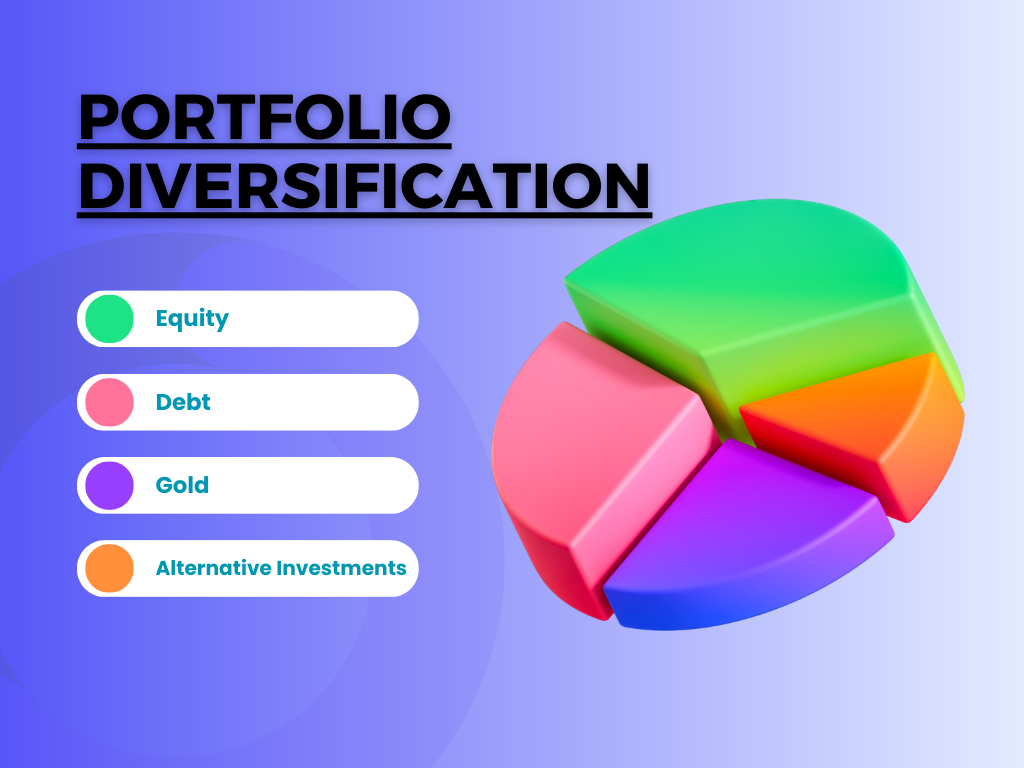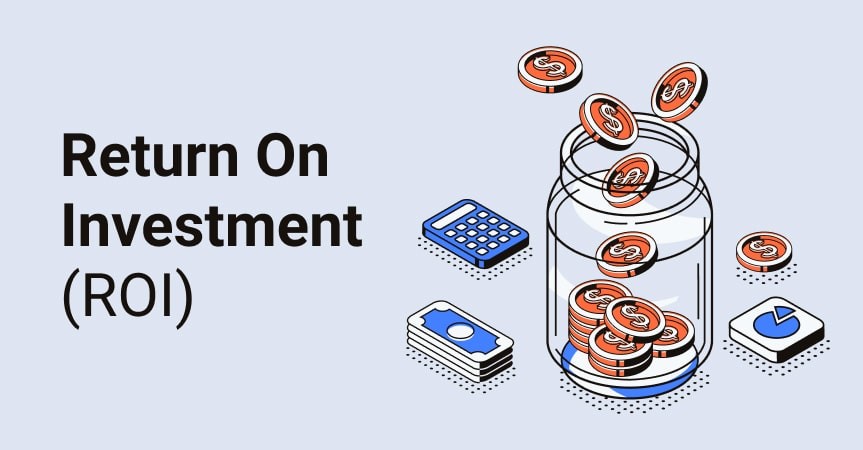Entering the world of SaaS investing can seem like a complex endeavor, especially if you’re new to this high-growth sector.
The chatter in investment forums and news sites might lead you to believe that without prior experience or deep tech knowledge, it’s impossible to make wise investments in this space.
“You need a solid understanding of technology and software development cycles to invest successfully in SaaS companies.” This is not entirely true.
In fact, some of the most successful investors in SaaS businesses have backgrounds outside of tech. They’ve managed to navigate their way through by focusing on business fundamentals rather than intricate technical details.
Venture Capital in the SaaS Industry
Venture capital is increasingly being funneled into the SaaS industry due to its strong growth potential and lucrative prospects, with Series A deals for SaaS startups reaching over $1.04 billion in recent times. In fact, recent data shows that SaaS startups have amassed over $1.04 billion in Series A deals alone.
But what makes these companies so appealing for investors?
To answer this question, we need to delve into some key factors attracting venture capitalists to SaaS investing.
Key Factors Attracting Venture Capitalists to SaaS Startups
SaaS investing: The allure of recurring revenue streams: The business model employed by most SaaS businesses revolves around subscription-based services, which guarantees steady income – making them financially enticing investments for any investor eyeing long-term success.
This consistent cash flow provides financial stability while offering room for future growth, all without necessitating substantial infrastructure or personnel costs. This ability to scale up operations efficiently gives these ventures a competitive advantage within their respective markets.
As more industries embrace digital transformation and remote work becomes increasingly prevalent, demand for cloud-based software solutions has skyrocketed across various sectors, including healthcare and education, among others.
Venture capitalists see this growing market trend as an opportunity not just today but also foresee continued expansion well into the future – thus driving further interest in funding such promising enterprises.
In conclusion, investing in SaaS startups offers potentially rewarding returns given their unique selling propositions coupled with robust market trends pointing towards sustained sectoral growth.
Dive into the high-growth, lucrative world of SaaS investing. With over $1.04B in Series A deals and a business model promising steady income, it’s no wonder venture capitalists are flocking to fund these startups. #SaaSInvesting #VentClick to Tweet
Financial Operations of Successful SaaS Businesses
The heart and soul of successful SaaS businesses lie in their financial operations. The unique business model, characterized by subscription-based services, gives birth to distinctive revenue streams and cost management strategies.
Importance of Recurring Revenue Streams
SaaS companies’ lifeblood is recurring revenue models that promise long-term success and financial stability. Unlike traditional software firms selling products for a one-time fee, SaaS startups offer subscriptions to cloud-based solutions. These generate predictable income over time, which aids in planning future growth initiatives effectively.
A report from McKinsey & Company suggests that fast-growing SaaS firms with an annual growth rate exceeding 20% had more than double the forward-revenue multiple compared to those growing less rapidly at under 10%. This illustrates how crucial recurring revenues are when it comes down to enhancing company valuation.
Beyond this, the subscription model enables deeper customer relationships as regular updates and frequent customer service interactions foster loyalty, thereby solidifying these steady revenue streams even further.
Fundamentals of Cost Management
In addition to generating consistent revenues, effective cost management plays a vital role towards profitability within SaaS businesses. Major costs typically involve research & development (R&D), sales & marketing expenses, along with general administrative overheads such as salaries or rent payments, etc.
R&D expenditure often includes product development efforts aimed at maintaining a competitive advantage amidst evolving industry trends. High-performing SaaS startups generally allocate about 23% percent annually out from the total budget towards R&D activities, indicating its importance in driving innovation while retaining market share. Sales/marketing expenditures primarily focus on acquiring new customers besides keeping existing ones engaged – both critical factors influencing top-line growth plus bottom-line profits simultaneously. General administrative costs, although necessary operational aspects, need careful monitoring so they don’t erode profit margins excessively due to poor control measures being implemented. By understanding these fundamental areas related closely to
Key Takeaway:
Successful SaaS businesses thrive on their unique financial operations, with a focus on recurring revenue streams and effective cost management. Recurring revenues provide predictability for growth planning while fostering customer loyalty. On the flip side, balancing costs in R&D, sales & marketing, and administrative overheads is key to profitability.
How Saas Startups Can Acquire Customers Effectively
The journey to customer acquisition for SaaS startups is a strategic mix of marketing, sales, and superior customer service. The ultimate goal? Draw in potential users with the allure of your platform’s unique value proposition, then keep them coming back for more.
Role of Retention Strategy in Growing Customer Base
A robust retention strategy plays an essential role when it comes to expanding a startup’s user base. It’s all about striking that delicate balance between nurturing existing customers while continuously attracting new ones—this approach can propel consistent growth within the competitive landscape of saas companies.
An effective retention strategy begins by delivering stellar user experiences right out the gate. This involves providing software solutions designed intuitively enough to solve real-world problems faced by users every day.
Beyond this initial engagement phase lies ongoing support—an area where many businesses falter but one which holds immense potential if done right. Timely assistance during times of trouble helps build trust—a key factor leading towards long-term loyalty and revenue growth through recurring revenue streams..
Precision-Targeted Marketing Campaigns
In addition to fostering strong relationships with current clients, there exists another crucial aspect: reaching out consistently via precision-targeted marketing campaigns aimed at prospective customers – those who could potentially benefit from your product or services offered on cloud-based software solutions platforms like yours. (Neil Patel)..
Digital channels such as social media platforms or email newsletters offer cost-effective ways for businesses looking forward into future growth prospects; these personalized messages not only increase brand visibility but also drive traffic back towards their website – making conversions possible..
Leveraging Partnerships
Sometimes teaming up with other organizations proves beneficial especially when trying expand one’s client pool–through partnerships integrations complementary products/services already being utilized target audiences boost exposure significantly (HubSpot)..
Fremium Models & Free Trials
Last certainly least freemium models free trials tried-and-true method realm SaaS startups exploring strategies acquire effectively(Tom Tunguz).
Key Takeaway:
SaaS startups can effectively acquire customers by blending marketing, sales, and excellent service. A robust retention strategy is crucial for growth, ensuring existing clients are happy while attracting new ones. Precision-targeted marketing campaigns and strategic partnerships further expand reach. Freemium models offer a risk-free trial that often leads to conversions.
The Future Growth Potential of SaaS Startups
As the landscape for SaaS startups continues to evolve, their future growth potential is a hot topic. Expanding markets such as health tech and edutech are offering new avenues for digital disruption.
Predicting growth based on past success stories:
We can glean valuable insights into predicting future growth by examining successful companies like Salesforce and Slack. These businesses have managed to scale operations while maintaining robust recurring revenue streams – all thanks to continuous innovation and adaptability in line with industry trends.
Salesforce’s rapid rise from a small startup to one of the world’s leading cloud-based software providers offers valuable lessons in customer-centricity, product development, and marketing. Key among these is an unwavering focus on customer-centricity, relentless product development efforts aimed at enhancing user experience, and effective marketing strategies that efficiently acquire customers.
On another note, Slack’s IPO serves as a case study for SaaS startups aiming for rapid expansion without compromising profitability or customer satisfaction levels. The company has built a strong community around its platform which was instrumental in creating steady revenue generation despite stiff competition within the market.
Growth Challenges Ahead: Regulatory Environments & Industry Trends
Navigating regulatory environments poses significant challenges, especially when venturing into sectors where data security takes center stage like healthcare or finance. Compliance with regulations such as GDPR (General Data Protection Regulation) requires substantial resources – both financial capital investment and human effort – thus potentially impacting profit margins negatively.
In addition to this hurdle, shifts in industry trends also significantly impact how we predict SaaS startups’ future growth prospects. With emerging technologies including AI (Artificial Intelligence), ML (Machine Learning), and Blockchain making waves, it becomes imperative that they stay ahead through constant innovation coupled with agile adaptation capabilities.
Key Takeaway:
SaaS startups, with their future growth potential and continuous innovation, are attracting investors’ attention. Learning from success stories like Salesforce and Slack can provide valuable insights into scalability and customer retention strategies. However, navigating regulatory environments and staying ahead of industry trends present significant challenges that require agility and resourcefulness.
Conclusion – Investing in SaaS Startups
As venture capitalists seek out new opportunities, SaaS startups have become the focus of investment due to their high growth potential and innovative business models. The unique business model combined with high growth potential makes these companies an enticing proposition for investors.
Key Takeaways for Investors
SaaS businesses stand out due to their distinctive value proposition that differentiates them from traditional models. These entities thrive on recurring revenue streams, scalability without significant additional costs, and a growing customer base – all key factors contributing to long-term success and financial stability.
In the competitive landscape of SaaS companies, innovation in product development strategies paired with effective customer acquisition methods play pivotal roles. Companies can secure a competitive advantage by leveraging marketing automation tools alongside cloud-based software solutions which enhance efficiency while reaching customers.
A critical element underpinning successful SaaS businesses lies within robust financial operations marked by consistent revenue growth even when scaling up operations. This ability to manage costs while expanding demonstrates strong operational efficacy within these enterprises.
An integral aspect when considering investments into SaaS startups involves understanding how they effectively acquire customers using various approaches such as targeted marketing campaigns or offering free trials or freemium models. Furthermore, retention strategy plays an instrumental role in maintaining a steadily growing customer base over time. Recent industry studies highlight this importance.
Predicting future growth based on past success stories offers valuable insights regarding possible returns from investing in SaaS startups like those highlighted here. However, it’s also crucial to consider other influencing factors like changes in industry trends or regulatory environments that could impact this trajectory towards growth.
To wrap things up, investment opportunities presented by SaaS startups stem largely from their innovative business model combining scalable technology with recurrent revenues. As illustrated through numerous examples of successes within the sector, despite occasional dips observed recently across certain sectors including health tech (source).
Key Takeaway:
SaaS startups are the new goldmine for investors, thanks to their unique business model and high growth potential. Their success hinges on recurring revenue streams, scalability, customer acquisition strategies, robust financial operations and effective retention tactics. However, while past successes hint at promising returns, changes in industry trends or regulations could sway the path of growth.
Conclusion
The lure? High growth potential and lucrative returns.
SaaS startups have a unique appeal to venture capitalists, thanks to their scalable models and recurring revenue streams.
Understanding the competitive landscape is key. It’s shaped by industry trends like marketing automation and cloud-based solutions.
A successful SaaS business operates on solid financial foundations. Recurring revenues are at its heart.
Effective customer acquisition strategies can make or break these startups. Retention strategy plays a pivotal role too!
Predicting future growth involves looking at past success stories and current market trends – health tech is one to watch!
In conclusion, SaaS investing presents a promising opportunity for those ready to dive into this dynamic sector. The rewards could be well worth it!
If you want to learn more about this, sign up for my newsletter.


